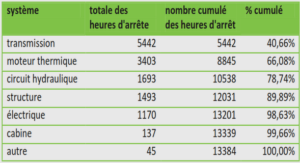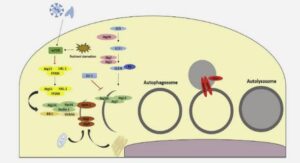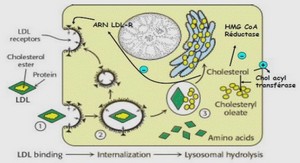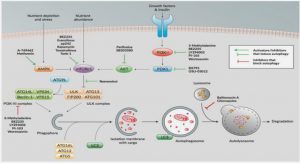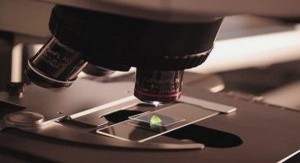Helichrysum gymnocephalum Essential Oil
Introduction
The flora of Madagascar is particularly rich, with a specific diversity and more importantly, it contains endemic species. In Madagascar, more than 400 species described in other parts of the World, especially in Southern Africa, Western Europe and Australia, and 115 species, all endemic of the large Island, are currently known [1]. The gender Helichrysum (from the Greek « helios » sun and « chrysos » gold) which belongs to Asteraceae family is one of the endemic species. Helichrysum gymnocephalum (Immortal with naked head) is a shrub from 1 to 4 meters in height whose ultimate branches are covered by a white and very fine tomentum. The leaves are lengthily attenuated towards the base in short petioles, covered on the two faces by a tomentum and having three quite visible principal veins in lower part. Flowering lasts from February till May, seeds are also papillate [2]. Some medicinal properties of Helichrysum species have been reported, and various studies have demonstrated the antimicrobial and antiseptic properties of many species from the genus Helichrysum [3-5]. H. gymnocephalum has been traditionally used therapeutically as a tea or syrup prepared from the leaves to treat gingivitis or buccal ulcers [6]. It is also used as ointment for rheumatism or gout by mixing crushed leaves with bacon. The leaves and flowers have properties as diuretics, stimulants and would relieve neuralgia [7]. Analgesic, aphrodisiac, antiseptic, antiscorbutic, deodorant, tonic and anthelmintic applications have been reported for H. gymnocephalum [8,9]. H. gymnocephalum is also used in the manufacture of toothpaste for the local market. The leaves are also used to embalm dead bodies. The essential oil (EO), a complex mixture of compounds, is considered among the most important antimicrobial agents [3] present in these plants, and may also have antioxidant and anti-inflammatory activities. These last years, an overflow of information has appeared on the role of the oxidative stress in the emergence of a certain number of diseases, such as cancers, cardiovascular diseases and degenerative diseases related to ageing, in parallel the possible therapeutic role of antioxidants in these diseases was emphasized [10]. More than a third of the World’s population (about two billion people) lives in malaria-endemic areas. The majority of deaths caused by falciparum malaria occur in sub-Saharan Africa, primarily among children younger than 5 years and pregnant women living in remote rural areas with limited access to health services [11]. Nearly all malaria deaths and a large proportion of morbidity are caused by Plasmodium falciparum. In the last decades, resistance to several antimalarial drugs became widely disseminated, while the cost of effective treatments was prohibitive for the majority of the populations Molecules 2011, 16 8275 in the endemic regions. Thus, rapid development of resistance by P. falciparum to the conventional drugs necessitates search for new antimalarial drugs [11]. Breast cancer is second only to lung cancer as the most common cancer in women. Roughly 180,000 women are diagnosed with this disease each year, of which 44,000 or almost 20% will die [12]. With increased awareness and increased use of routine mammograms, more women are diagnosed in the earlier stages of this disease, at which time a cure may be possible. The disease is more common in women after the age of 40. It is also more frequent in women of a higher social-economic class [12]. Cancer diseases are characterized by an uncontrolled proliferation of cells. They constitute the second cause of mortality behind cardiovascular diseases in developed countries and the third after infectious and cardiovascular diseases in developing countries [13]. The use of plant extracts and derived products in the treatment of cancer is of exceptional value in the control of malignancies, due to the fact that most of the anticancer drugs severely affect the normal cells [13,14]. The aim of the present study was the evaluation of H. gymnocephalum leaves essential oil for its possible antioxidant and biological activities. In this study, we: (i) examined the chemical components of the essential oil by GC-MS and GC-FID; (ii) evaluated their cytotoxic, antimalarial and antioxidant activities and (iii) reviewed researches for essential oils having an activity against P. falciparum and/or on MCF-7 cell line in order to identify, by correlation, the main active compounds. 2. Results and discussion 2.1. Chemical Composition The essential oil yield of H. Gymnocephalum obtained from hydrodistillation of leaves was 0.40%. Two previous works have quantified the yield of this essential oil. They studied the shoot part of the plant mainly bark and leaves; extraction yields for essential oil were 0.5% and 0.41% according to Mollenbeck et al. [26] and Cavalli et al. [27], respectively. In the present work, only the leaves were used and a similar essential oil yield was obtained. Twenty three components have been identified in H. gymnocephalum essential oil by GC-MS (Figure 1 and Table 1). Sesquiterpene hydrocarbons and oxygenated monoterpenes were the major groups of compounds (32.4% and 54.0%, respectively), while oxygenated sesquiterpenes were not present. The major monoterpenes found were 1,8-cineole (47.4%), p-cymene (4.3%), (E)-β-ocimene (2.4%), 2,3-dihydro-1,8-cineole (2.1%) and α-terpinolene (1,3%). Among the sesquiterpene hydrocarbons bicyclosesquiphellandrene (5.6%), γ-curcumene (5.6%), α-amorphene (5.1%) and bicyclogermacrene (5%) were present in appreciable quantities. On the other hand, this essential oil contained a phenolic compound (2,3-di-tert-butylphenol) at 0.5%. The chemical composition of H. gymnocephalum essential oil has been reported elsewhere. Mollenbeck et al. [26] have shown that 1,8-cineole (66.7%) was the major compound of the essential oil, a level which was higher than in our work (47.7%). Also, in our work, the major compounds were β-caryophyllene (3.3%), γ-terpinene (3.1%), β-pinene (2.7%), α-pinene (2.5%) and ρ-cymene (2.3%). As shown in Table 1, the differences between our work and previously published results concerned extraction yield, the number of identified compounds and their respective contents. In our investigation, H. gymnocephalum plants were harvested in July 2008, and we treated only leaves for the essential oil extraction. Indeed, H. gymnocephalum was harvested in March 1997 by the team of Mollenbeck et al. [26] and between November–December 1994 by Cavalli et al. [27].
Antioxidant Activity
Data presented here is the first bibliographical report on the antioxidant activity of H. gymnocephalum. Furthermore, our results (Table 2) demonstrated that the essential oil of H. gymnocephalum has poor antioxidant activity against DPPH (IC50 value > 1,000 mg/L) and ABTS+ (IC50 = 1,487.67 ± 47.70 mg/L). These results may be attributed to a low antioxidant activity (in these two tests) of the compounds identified in the essential oil of H. gymnocephalum. Four other Helichrysum species (H. dasyanthum, H. excisum, H. felinum and H. petiolare) were also reported to exhibit also a low antioxidant activity against test DPPH (IC50 > 100 mg/L) [28].
Cytotoxic Activity
In recent years, considerable attention has been focused to identifying naturally occurring substances able to inhibit, delay or reverse the process of multistage carcinogenesis. Plant essential oils are believed to reduce the risk of cancer when used in prevention [29]. In this work, the cytotoxic activity of H. gymnocephalum leaf essential oil against human breast cancer cells MCF-7 (IC50 = 16 ± 2 mg/L) was reported for the first time. Data in Table 3 shows the anti-cancer activity against MCF-7 cells (IC50 mg/L) of several essential oils reported in the literature and their main components. Essential oils were extracted from H. gymnocephalum, Schefflera heptaphylla [30], Laurus nobilis, Origanum syriacum, Origanum vulgare, Salvia triloba [31], Heteropyxis dehniae [32], Schinus molle, Schinus terebenthifolius [33], Salvia officinalis [34], Melaleuca alternifolia [35], Citrus limon, Citrus medica, Citrus sinensis [36] and Talauma gloriensis [37]. Based on the bibliographical review, we can consider that the IC50 of our essential oil (16 mg/L ± 2) is very well positioned among these studied oils in the Table 3. Among the studied essential oils only five showed higher anti-cancer activities than H. gymnocephalum’s essential oil. Indeed, nine essential oils had lower activities for the same test (Table 3).
Antimalarial Activity
Many studies on the antiplasmodial activity of crude essential oils have been reported [38,39]. The in vitro antiplasmodial activity of H. gymnocephalum essential oil was determined against the FcB1 chloroquine-resistant strain of P. falciparum (Table 2). The antimalarial activity of the essential oil (IC50 values) was 25 ± 1 mg/L. Since the value of IC50 was found between 5 and 50 mg/L, it can be considered that H. gymnocephalum essential oil has a good activity against P. falciparum [24]. This rather high value of IC50 compared to that of chloroquine (IC50 = 0.1 ± 0.09 mg/L) can be explained by the low concentration of the active compound(s) since the essential oil is a multi-components mixture. Data in Table 4 summarize the antimalarial activity [IC50 (mg/L)] of all essential oils cited in the literature and their components. These EO have been obtained from H. gymnocephalum, Xylopia phloiodora, Pachypodanthium confine, Antidesma laciniatum, Xylopia aethiopica, Hexalobus crispiflorus[40], Salvia stenophylla, Salvia runcinata, Salvia repens [41], Salvia albicaulis, Salvia dolomitica [42], Lippia multiflora [43], Helichrysum cymosum [44], Artemisia gorgonum Webb [45], Arnica longifolia, Aster hesperius and Chrysothamnus nauseosus [46]. The results based on this bibliographical review (Table 4) showed that the IC50 of our essential oil (25 mg/L ± 1) was at an interesting level, quite well positioned among these studied oils. We found seven essential oils which have higher antimalarial activity than that of H. gymnocephalum essential oil. In addition, 11 essential oils had lower activities in similar tests (Table 4).

